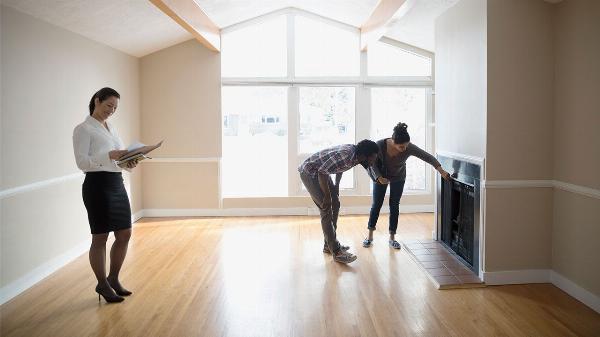Top 10 Things to Look for During a Home Walkthrough

Strong8k brings an ultra-HD IPTV experience to your living room and your pocket.
Hey there, folks! If you're in the process of buying a new home, one of the most crucial steps is conducting a thorough home walkthrough. This allows you to get up close and personal with the property, spotting any potential issues or areas of concern before making that big purchase decision. Now, I know what you're thinking - "But I'm hiring a professional for home inspections Massachusetts, so why do I need to worry about it?" Well, let me tell you, even the most experienced inspectors can miss things, and it's always better to have an extra set of eyes on the job. Plus, getting hands-on during the walkthrough can help you better understand the property you're about to call home.
So, without further ado, let's dive into the top 10 things you should be on the lookout for during your home walkthrough!
Structural Integrity
Check for Cracks and Settling
One of the most important aspects of any home is its structural integrity. During your walkthrough, keep an eye out for any cracks in the walls, floors, or ceilings. These could be signs of settling or foundation issues, which can be costly to repair if left unchecked. Don't forget to check the basement or crawl space, as this is where many structural problems can originate.
Inspect the Roof
While you're at it, take a good look at the roof. Are there any missing or damaged shingles? Signs of leaks or water damage? A sturdy roof is essential for protecting your home from the elements, so it's worth paying close attention to its condition.
Plumbing and Water Systems
Check for Leaks
Water damage can be a homeowner's worst nightmare, so it's crucial to check for any signs of leaks during your walkthrough. Turn on all the faucets, flush the toilets, and check under sinks for any moisture or water stains. Don't forget to also inspect the water heater for any signs of rust or leaks.
Water Pressure and Drainage
While you're testing the plumbing, keep an eye on the water pressure. Low pressure could indicate a larger issue with the pipes or water supply. Additionally, make sure all drains (sinks, tubs, showers) are draining properly and without any backups or clogs.
Electrical Systems
Inspect Outlets and Switches
Faulty electrical systems can be a serious fire hazard, so it's important to check that all outlets and switches are functioning properly. Flip switches on and off, and use a simple outlet tester to ensure they're properly grounded. Also, keep an eye out for any exposed wiring or outdated electrical systems that may need to be updated.
Check for Adequate Lighting
Good lighting is essential for any home, so take note of any rooms or areas that seem dim or poorly lit. This could indicate a need for additional lighting fixtures or even a potential wiring issue.
HVAC Systems
Test the Heating and Cooling
During your walkthrough, make sure to test both the heating and cooling systems. Turn them on and let them run for a bit, checking for proper airflow and distribution throughout the home. Listen for any unusual noises or smells, as these could indicate a problem with the system.
Inspect the Ductwork
While you're at it, take a peek at the ductwork if possible. Look for any signs of leaks, gaps, or improper insulation, as these can significantly impact the efficiency of your HVAC system.
Windows and Doors
Check for Proper Operation
Open and close every window and door in the home, ensuring they operate smoothly and without any sticking or jamming. This is also a good opportunity to check for any drafts or air leaks, which can drive up energy costs and make your home less comfortable.
Inspect the Frames and Seals
Take a close look at the frames and seals around windows and doors. Are they in good condition, or do they show signs of wear and tear? Damaged frames or seals can allow moisture and air to seep in, potentially leading to future problems.
Insulation and Energy Efficiency
Check for Proper Insulation
Proper insulation is key to maintaining a comfortable and energy-efficient home. During your walkthrough, try to get a glimpse of the insulation in the attic, walls, or crawl spaces if possible. Look for any gaps, compressions, or areas that seem to be lacking adequate insulation.
Inspect Windows and Doors for Energy Efficiency
As mentioned earlier, drafty windows and doors can be a major source of energy loss. Take note of any particularly drafty areas, as these may need to be addressed to improve the home's overall energy efficiency.
Appliances and Fixtures
Test All Appliances
Don't forget to give all the major appliances a thorough test run during your walkthrough. Turn on the oven, run the dishwasher, and check the fridge and freezer temperatures. Look for any signs of wear or malfunction, as replacing these items can be a significant expense.
Inspect Fixtures and Finishes
While you're at it, take a look at the various fixtures and finishes throughout the home. Check for any chips, cracks, or signs of wear that may need to be addressed or replaced.
Interior and Exterior Finishes
Inspect the Paint and Wallcoverings
Take a close look at the walls, ceilings, and trim throughout the home. Are there any signs of water damage, peeling paint, or outdated wallcoverings? These can be indicators of larger issues or simply a need for some cosmetic updates.
Check Flooring and Stairs
Don't forget to inspect the flooring and stairs as well. Look for any loose or creaky boards, areas of excessive wear, or signs of potential tripping hazards.
Outdoor Living Spaces
Examine the Deck or Patio
If the home has a deck or patio, be sure to give it a thorough inspection. Check for any loose boards, rotting wood, or signs of structural issues. Also, take note of the condition of any railings or safety features.
Inspect the Yard and Landscaping
While you're outside, take a walk around the yard and examine the landscaping. Look for any potential drainage issues, overgrown vegetation, or areas that may require significant maintenance or updates.
Environmental Concerns
Check for Signs of Pests or Infestations
During your walkthrough, keep an eye out for any signs of pests or infestations, such as droppings, nests, or wood damage. These can be costly and difficult to eliminate, so it's important to address them early on.
Assess the Need for Mold or Radon Testing
Depending on the age and location of the home, you may want to consider scheduling professional mold or radon testing. These environmental concerns can have serious health implications if left unchecked.
Whew, that's a lot to keep in mind, but trust me, taking the time to thoroughly inspect these areas during your home walkthrough can save you a whole lot of headaches (and money) down the line. Remember, even if you're hiring a professional for Home Inspections Massachusetts, your personal involvement and attention to detail can make all the difference in ensuring you're making a well-informed decision.
Now, before you go, let me leave you with a few final tips:
Don't be afraid to ask questions! If something doesn't seem quite right or you're unsure about something, speak up and get clarification.
Take plenty of notes and photos during your walkthrough. These can be invaluable references later on.
Trust your gut. If something just doesn't feel right about the property, it's okay to walk away and keep looking.
Alright, folks, that's all from me! I hope this guide has been helpful in preparing you for your upcoming home walkthrough. Remember, knowledge is power, and being an informed homebuyer can save you a ton of stress and money in the long run. Happy house hunting, and may your next home be everything you've dreamed of (and more)!
Note: IndiBlogHub features both user-submitted and editorial content. We do not verify third-party contributions. Read our Disclaimer and Privacy Policyfor details.







